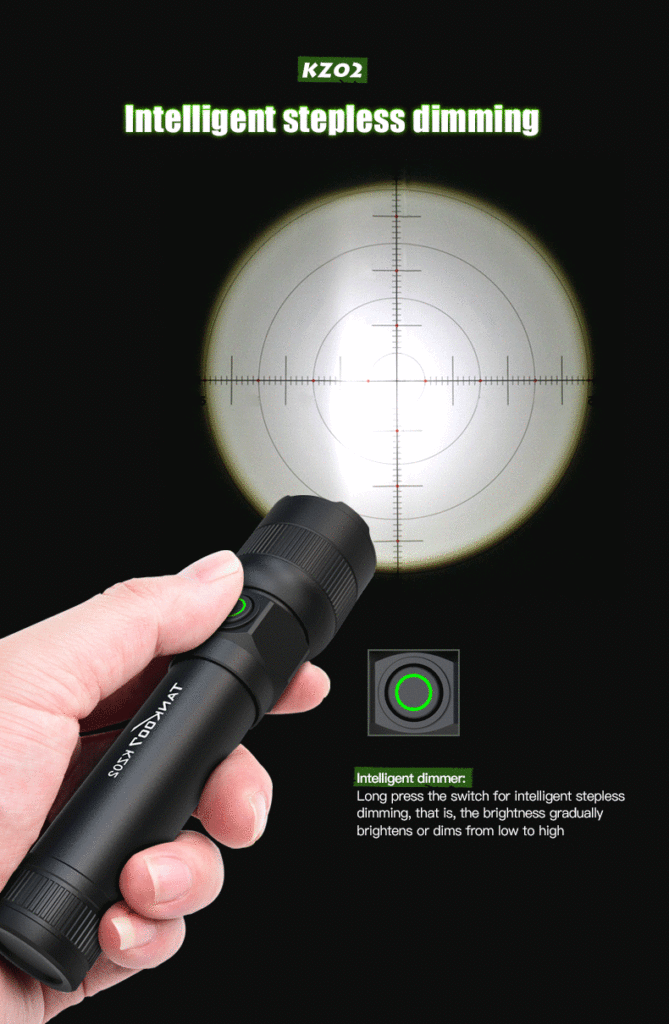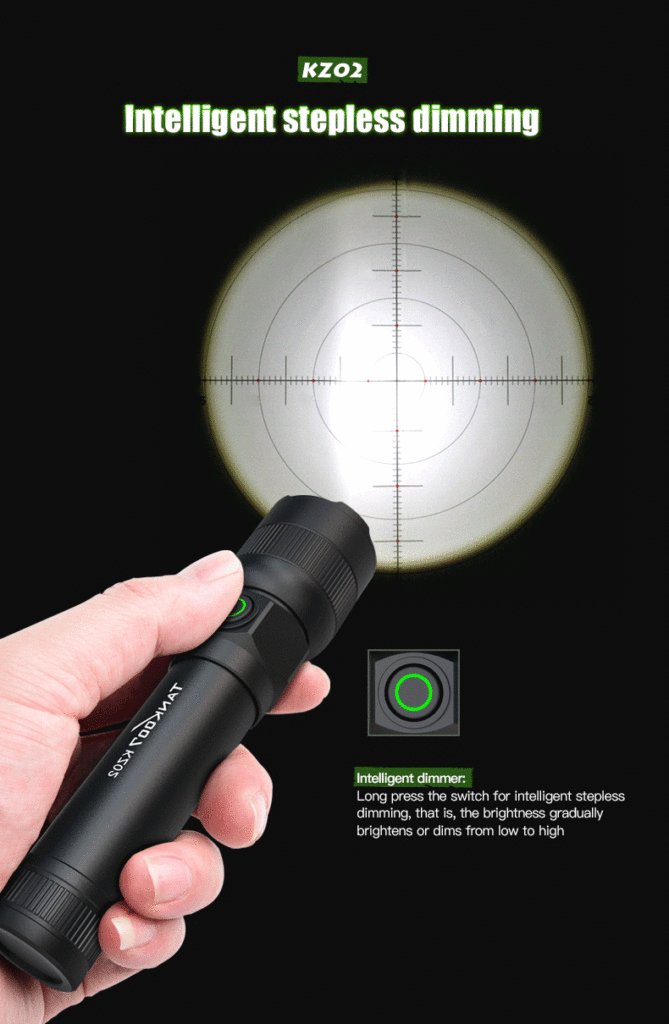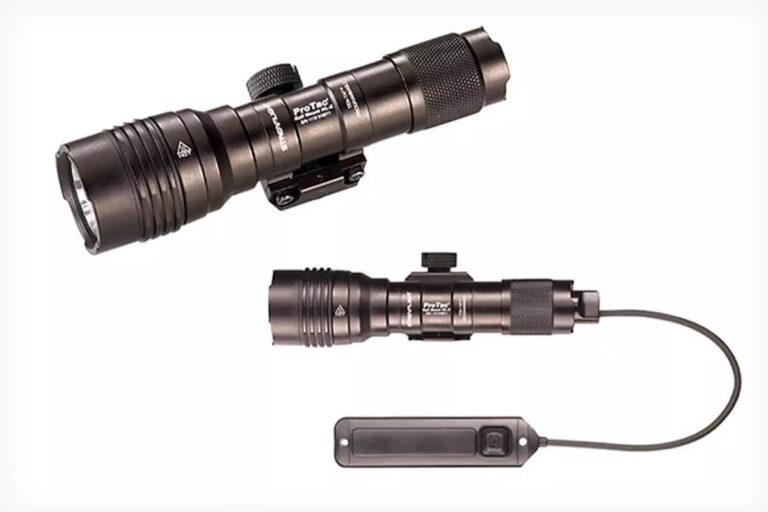Parts of a Flashlight Explained: Understanding Each Component
In this article, we will delve into the essential parts of a flashlight, which is a key tool used for illumination in various situations, from everyday use to emergency preparedness. Understanding the components and their functions not only enhances our appreciation for this common device but also informs better choices for its use and maintenance.
We will explore the electrical circuit that powers the flashlight, the different types of bulbs, batteries, and switches, as well as the reflective and lens systems that shape the light output. By the end of this article, readers will have a comprehensive understanding of how flashlights work, the various technologies involved, and how to choose the right flashlight for their needs.
Table of Contents
- Understanding the Electrical Circuit
- Types of Light Sources in Flashlights
- Battery Types and Their Impact
- Switch Mechanisms in Flashlights
- Reflectors and Lenses: Shaping the Beam
- Mechanical Flashlights: An Alternative
- Choosing the Right Flashlight
- FAQ
- Conclusion
Understanding the Electrical Circuit
This section will cover the basic electrical circuit that powers a flashlight, explaining the roles of batteries, switches, and metal strips. It will discuss how electricity flows and the importance of creating a complete circuit.
The Role of Batteries
Batteries serve as the primary power source for flashlights, typically providing a voltage output of around 1.5V for alkaline batteries. When multiple batteries are used in a series, the total voltage increases, allowing for a stronger light output.
Function of the Switch
The switch in a flashlight serves as a critical component that controls the flow of electricity. When the switch is activated, it closes the circuit, allowing current to flow from the batteries to the bulb.
This function is essential for the flashlight to operate.
Metal Conductors
Metal strips or conductors are crucial in connecting the various components of the flashlight. They facilitate the flow of electricity with minimal resistance, ensuring that the energy from the batteries effectively reaches the light source.
| Component | Function | Typical Voltage |
|---|---|---|
| Batteries | Power source for the flashlight | 1.5V (Alkaline) |
| Switch | Controls the flow of electricity | 0V (Open), 1.5V (Closed) |
| Metal Conductors | Connect components for electricity flow | Dependent on battery configuration |
The table above highlights the essential components of a flashlight’s electrical circuit. The batteries are the primary power source and provide a voltage of 1.5V, typically found in alkaline batteries.
The switch plays a vital role in controlling the flow of electricity, closing the circuit to allow current to flow. The metal conductors serve as connectors, enabling electricity to travel from the batteries to the light source with minimal resistance.
Understanding these components helps appreciate how they work together to provide illumination.
Types of Light Sources in Flashlights
This section will explore the different types of bulbs used in flashlights, including incandescent and LEDs. It will compare their efficiency, brightness, and lifespan, and discuss how advancements in LED technology are changing the market.
Incandescent Bulbs
Incandescent bulbs were the traditional choice for flashlights, utilizing a tungsten filament that glows when electricity passes through it. They are known for their reliable performance but are less energy-efficient compared to modern alternatives.
Light Emitting Diodes (LEDs)
LEDs have revolutionized flashlight technology by offering higher efficiency and longer lifespans. They emit light when an electric current passes through a semiconductor, producing less heat and consuming less power than incandescent bulbs.
Comparison of Light Sources
In comparing the two types of light sources, LEDs outperform incandescent bulbs in terms of efficiency, brightness (measured in lumens), and lifespan. For instance, while incandescent bulbs may last around 1,000 hours, LEDs can last up to 50,000 hours.
| Bulb Type | Efficiency (Lumens per Watt) | Lifespan (Hours) |
|---|---|---|
| Incandescent | 10-17 lm/W | 1,000 |
| LED | 80-100 lm/W | 25,000 – 50,000 |
This table illustrates the differences between incandescent and LED bulbs in terms of efficiency and lifespan. Incandescent bulbs typically offer between 10 to 17 lumens per watt, resulting in a lifespan of around 1,000 hours.
In contrast, LEDs provide an impressive 80 to 100 lumens per watt and can last between 25,000 to 50,000 hours. These differences highlight why LEDs are rapidly becoming the preferred choice in modern flashlight design, thanks to their superior efficiency and longevity.
Battery Types and Their Impact
This section will explain the various battery types commonly used in flashlights, such as alkaline, lithium-ion, and rechargeable options. It will highlight their advantages and disadvantages in terms of performance and environmental impact.
Alkaline Batteries
Alkaline batteries are the most common type used in flashlights. They offer a good balance of performance and cost, providing 1.5 volts per cell.
However, they are non-rechargeable and have limited lifespans.
Lithium-Ion Batteries
Lithium-ion batteries are rechargeable and known for their high energy density and longevity. They typically provide 3.7 volts per cell, making them ideal for high-performance flashlights.
However, they can be more expensive than alkaline batteries.
Rechargeable vs. Non-Rechargeable
When comparing rechargeable and non-rechargeable batteries, rechargeable options are more sustainable as they reduce waste and provide cost savings over time. However, they require a charging infrastructure, which can be a drawback for some users.
| Battery Type | Voltage (V) | Lifespan (Cycles) | Cost |
|---|---|---|---|
| Alkaline | 1.5 | 1-2 | Low |
| Lithium-Ion | 3.7 | 500-1000 | Medium-High |
| Rechargeable NiMH | 1.2 | 1000 | Medium |
The table above compares various battery types used in flashlights, highlighting their key specifications. Alkaline batteries provide 1.5 volts but are limited to 1-2 cycles and are low-cost.
Lithium-ion batteries, while more expensive, offer a higher voltage of 3.7 volts and can last for 500-1000 cycles. Rechargeable NiMH batteries offer a moderate voltage of 1.2 volts and can last around 1000 cycles at a medium cost.
The choice of battery can significantly impact both the performance and environmental footprint of the flashlight.
Switch Mechanisms in Flashlights
This section will cover the various types of switches used in flashlights, including push-button, twist, and slide switches. It will discuss how these mechanisms affect usability and functionality.
Push Button Switches
Push button switches are commonly used in modern flashlights. They allow users to turn the light on and off quickly and can also offer multiple modes of operation, such as high, low, and strobe.
Twist Switches
Twist switches require the user to twist the head or tail of the flashlight to turn it on or off. This mechanism is simple but can be less convenient in urgent situations compared to push-button switches.
Slide Switches
Slide switches are often found on older models or specific designs. They provide a straightforward on/off functionality but may not offer the versatility of push-button switches.
| Switch Type | Usability | Common Applications |
|---|---|---|
| Push Button | High | Tactical lights, multi-mode flashlights |
| Twist | Medium | Standard flashlights |
| Slide | Low | Older models |
This table summarizes the usability and applications of different switch types in flashlights. Push-button switches rank highest in usability, making them ideal for tactical and multi-mode flashlights.
Twist switches offer a balance of simplicity but are less efficient in urgent uses. Slide switches are the least user-friendly and are typically found in older flashlight models.
Understanding these differences can help users select the right flashlight based on their needs.
Reflectors and Lenses: Shaping the Beam
This section will investigate the role of reflectors and lenses in flashlights, explaining how they influence beam focus and light distribution. It will differentiate between smooth and textured reflectors and their applications.
Types of Reflectors
Reflectors can be categorized into smooth and textured types. Smooth reflectors are designed for long-distance light throw, while textured reflectors provide a more diffused light suitable for close-range illumination.
Lens Types and Functions
The lens of a flashlight serves to protect the light source and shape the beam. Different lens types, such as frosted or clear lenses, influence how the light is spread, impacting the usability of the flashlight in various scenarios.
Beam Patterns: Hotspot vs. Spill
Understanding beam patterns is crucial for flashlight applications. A hotspot is the bright center of the beam, while spill refers to the surrounding light.
A combination of both is often desired for versatile usage.
| Reflector Type | Beam Quality | Typical Use Cases |
|---|---|---|
| Smooth Reflector | Narrow beam with high intensity | Long-range illumination |
| Textured Reflector | Wider beam with soft edges | General-purpose lighting |
The table above compares smooth and textured reflectors in terms of beam quality and typical use cases. Smooth reflectors are excellent for long-range illumination, providing a narrow, intense beam that can reach significant distances.
In contrast, textured reflectors offer a wider beam with softer edges, ideal for general-purpose lighting scenarios. Understanding these differences is important for users seeking specific lighting outcomes.
Mechanical Flashlights: An Alternative
This section will explore mechanically powered flashlights, discussing their operation without batteries. It will describe different types such as crank-powered and shake flashlights, and their unique features.
Crank-Powered Flashlights
Crank-powered flashlights generate electricity through a hand-crank mechanism. They eliminate the need for batteries, making them ideal for emergency situations.
These devices typically allow for continuous operation without the need for recharging.
Shake Flashlights
Shake flashlights, also known as linear induction flashlights, generate power through a shaking motion. A magnet moves through a coil to produce electricity, allowing for illumination without batteries.
However, their energy storage is limited compared to traditional flashlights.
Advantages and Disadvantages
While mechanically powered flashlights offer the benefit of being battery-free and environmentally friendly, they may not provide the same level of brightness or long-term usability as battery-operated flashlights.
| Type | Operation Method | Pros | Cons |
|---|---|---|---|
| Crank-Powered | Hand-crank generator | No batteries needed, always ready | Requires manual effort, limited light output |
| Shake | Shaking motion generates power | Portable, no batteries required | Limited energy storage, short runtime |
This table outlines the operational methods, advantages, and disadvantages of crank-powered and shake flashlights. Crank-powered flashlights are advantageous for their battery-free operation, while shake flashlights provide portability without batteries.
However, both types have limitations in terms of energy output and runtime. Understanding these mechanisms can help users make informed choices when selecting a flashlight for specific needs.
Choosing the Right Flashlight
This section will provide guidance on how to select a flashlight based on user needs, environmental conditions, and specific tasks. It will summarize the key features to consider.
Factors to Consider
When choosing a flashlight, consider factors such as brightness (measured in lumens), battery life, size, and weight. These elements can significantly influence your experience and satisfaction with the flashlight.
Common Use Cases
Different tasks may require different types of flashlights. For example, tactical flashlights are ideal for self-defense and emergency services, while compact flashlights are suitable for everyday carry.
Recommendations for Different Situations
For outdoor activities, such as camping, a flashlight with a higher lumen output and durable build is recommended. For emergency preparedness, consider a flashlight with multiple power sources, including mechanical options.
| Use Case | Recommended Features | Suggested Battery Type |
|---|---|---|
| Everyday Carry | Compact, lightweight, low lumens | AAA or AA |
| Camping | High lumens, durable, weather-resistant | Lithium-Ion |
| Tactical | High-intensity beam, multiple modes | CR123A or rechargeable |
The table above presents various use cases alongside recommended features and battery types for flashlights. Everyday carry flashlights should prioritize compactness and light weight, often utilizing AAA or AA batteries.
Camping flashlights, conversely, should have a high lumen output and be built to withstand environmental elements, ideally powered by lithium-ion batteries. Tactical flashlights should focus on high-intensity beams and various operational modes, commonly utilizing CR123A or rechargeable batteries.
These recommendations help users select the most suitable flashlight for their specific needs and situations.
FAQ
What is the lifespan of a typical flashlight?
The lifespan of a typical flashlight can vary widely depending on the type of bulb used. Incandescent bulbs generally last around 1,000 hours, while LED bulbs can endure significantly longer, often between 25,000 to 50,000 hours.
The overall lifespan also depends on the quality of the flashlight and the care it receives during use.
How do I properly maintain my flashlight?
To maintain your flashlight, regularly check and replace batteries to avoid leaks. Clean the contacts and lens to ensure optimal performance.
Store it in a cool, dry place and avoid exposing it to extreme temperatures or moisture. If your flashlight is rechargeable, ensure to follow the manufacturer’s guidelines for charging.
Can I use rechargeable batteries in any flashlight?
Not all flashlights are designed to accommodate rechargeable batteries. Always check the manufacturer’s specifications before using rechargeable batteries in your flashlight.
Some flashlights are specifically built for standard alkaline batteries and using different types can damage the device or affect performance.
What are the benefits of LED flashlights over traditional bulbs?
LED flashlights boast several advantages over traditional incandescent bulbs, including greater energy efficiency, longer lifespan, and lower heat output. They can produce more lumens per watt, which means they provide brighter light while consuming less power.
Additionally, LEDs are more durable and resistant to shock, making them ideal for rugged use.
How do I choose a flashlight for outdoor activities?
When selecting a flashlight for outdoor activities, consider the brightness (lumens), battery life, weight, and durability. A high-lumen output is essential for illuminating large areas, while a lightweight design is crucial for portability.
Additionally, opt for weather-resistant models to ensure reliability in various outdoor conditions.
Conclusion
In conclusion, understanding the different parts of a flashlight is essential for both effective usage and informed purchasing decisions. With advancements in technology, particularly with LEDs and battery options, consumers can now choose from a wide range of flashlights tailored to their specific needs.
By knowing the components and their functions, users can select the best flashlight for any situation, enhancing both safety and convenience in their daily lives.







